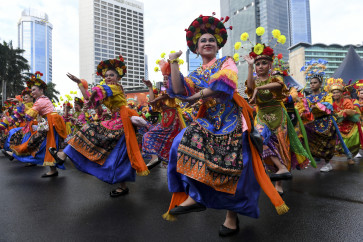Popular Reads
Top Results
Can't find what you're looking for?
View all search resultsPopular Reads
Top Results
Can't find what you're looking for?
View all search resultsBurger history and terminology
A “hamburger” does not contain ham, and the word “burger” actually means “citizen” in German
Change text size
Gift Premium Articles
to Anyone
A
“hamburger” does not contain ham, and the word “burger” actually means “citizen” in German.
Yes, the most common food on the planet has quite a baffling name. And, does it have anything to do with the city of Hamburg?
Partly, yes. In Germany, the suffix “-er” is often added to specific foods from certain areas. For example, Erdinger is a famous wheat beer from Erding, a suburb of Munich. So, “hamburger” refers to a minced beef steak that was popular in Hamburg. It was the sailors of Hamburg that brought the name and concept to New York.
But the burger that we know today was invented in the United States. There is some dispute over the origin of the burger because nobody knows exactly when someone thought of putting a patty between two buns and adding relish and certain toppings.
Popular belief leads to Charlie Nagreen, a.k.a. “Hamburger Charlie”, from Seymour, Wisconsin. Legend has it that he sold the first hamburger at the Seymour Fair in 1885 because he wanted his customers to be able to walk around while eating. Interestingly, this has become an important aspect of the burger: The only major meal you can enjoy with one hand while driving (thus, the invention of the drive-thru).
In Indonesia, the first hamburger restaurant outside hotels was American Hamburger (AH). In 1977, they opened their first outlet in the Blok M area, serving simple burgers similar to the Blenger version. They were quickly popular among students.
In 1991, McDonald’s entered the Indonesian market with much fanfare, followed by Burger King in 2007. Both had to adjust to the market by providing saus sambal (chili sauce). Unlike the US, both chains marketed themselves as middle to upper class restaurants, with fancy designs and cafes.
It was Blenger Burger in 2004, followed by Klenger Burger in 2006, which brought burgers back to their origins: simple, affordable food for the working class.
But, of course with an Indonesian twist — a creamier, sweeter taste.










